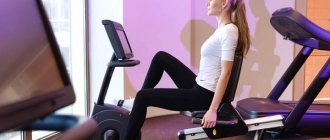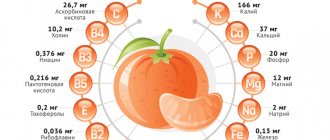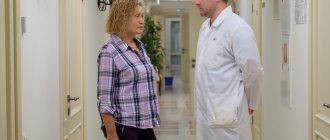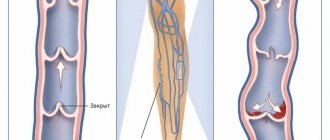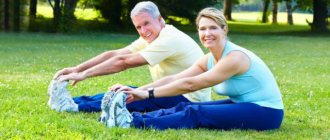Exercises for varicose veins are a necessary measure to prevent the development of varicose veins and its complications. Special exercises allow you to slow down the development of the disease, improve venous and lymphatic outflow and normalize arterial inflow, increase physical performance, improve peripheral blood circulation circulation in the legs, increases the tone of the veins and the effectiveness of “muscle pumps”. Exercise therapy for varicose veins reduces degenerative changes in the tissues of the affected limb.
How to choose a set of exercises for varicose veins
For varicose veins, several groups of exercises are recommended:
- exercises for the lower extremities, performed in a lying, sitting and standing position, helping to improve blood circulation;
- breathing exercises with an emphasis on increasing the amplitude of diaphragm movements;
- walking
The main goal of exercises for varicose veins is to strengthen the muscles in the legs, thighs and buttocks. This strengthening can prevent the progression of varicose veins.
To improve blood circulation in the legs, there are a large number of exercises that need to be used to prevent venous circulation disorders and their treatment. You can choose and use the exercises that are most suitable for you and most appropriate to your lifestyle. The main thing is that the complex includes exercises for different muscle groups as a whole. You can create a set of exercises to perform at work (exercises performed in a sitting or standing position), and for home, focus on exercises performed while lying down.
It is important to remember that when performing exercises you should not allow overload. If possible, after class you need to rest in a lying position with your legs raised.
The set of exercises for varicose veins also depends on the stage of the disease. In the stage of decompensation, exercise therapy is carried out mainly while lying down, sometimes while sitting. In the presence of trophic ulcers, active movements in the nearby (usually ankle) joint are excluded.
The duration of exercises for varicose veins is at least 10-15 minutes. In this case, the load should not be too high, the exercises should be performed at an average pace. The pulse should not exceed 100-120 beats per minute, and breathing should only be slightly rapid. You can take breaks between exercises.
The exercises are performed as many times as you can. On average - from 4 to 12 repetitions each.
An approximate set of exercises for varicose veins
Exercises for varicose veins, performed in a sitting position
Exercise 1.
Let's start with a breathing exercise
Spread your arms to the sides (inhale), lower them (exhale). Repeat 4-5 times.
Exercise 2.
Press your legs together, place both feet on your toes. Lower your feet to your heels, then lift them to your toes. Repeat the exercise 15-20 times.
Exercise 3.
While sitting, do “rolls” from toe to heel - alternately or simultaneously with both legs. Each leg should make from 10 to 20 rolls
Exercise 4.
Raise one leg above the floor and rotate your foot clockwise (from 10 to 20 rotations), then in the opposite direction. Change your leg and perform the exercise with the other leg.
Exercise 5.
Pressing the pedals to the floor. While sitting, tense the muscles of your feet as if you are trying to press an imaginary pedal to the floor.
Exercise 6.
While sitting, bend and tense your toes as if you are trying to grab the surface on which your feet are located. Maintain tension until fatigue sets in. Then relax your fingers, rest a little and repeat the exercise.
Exercise 7.
Place your hands on your knees. Bend forward, at the end of the tilt, rest your hands on your legs, and, pushing off, slowly return to the starting position.
Exercise 8.
While sitting, raise your right leg a little. Bend and straighten your foot at the ankle joint (toe down strongly and toe up strongly) until you feel tension in the calf muscles. The same thing - with the left foot.
Exercise 9.
If possible, while sitting on a chair or sofa, raise your legs and do the “bicycle” exercise.
Exercise 10.
Sit down and bend your knees, placing your palms on them. Spread and bring your knees together, overcoming the resistance of your hands. Repeat 5-10 times.
Exercise 11.
An important exercise that also serves as a prevention of hemorrhoids. In a sitting or lying position, strain the gluteal muscles 50-60 times, as if drawing in the perineum. Perform 2-3 times a day. This is a very important exercise.
Exercises for varicose veins, performed in a standing position
Walking:
- on socks;
- on the heels;
- with high knee elevation;
- ski step, alternating it with normal walking and relaxing the muscles of one and the other leg.
Walking duration is 3-5 minutes.
Exercise 1.
Stand up - legs together, arms along the body. Take a deep breath - slowly rise up onto your toes. As you exhale, also slowly return to the starting position.
Exercise 2.
Walk in place without lifting your socks off the floor. Alternately bend and straighten your feet at the ankle joint “towards yourself” - “away from yourself”. Then also bend and straighten your toes one by one.
Exercise 3.
Starting position - legs together. Rise up on your toes so that your heels lift off the floor a little - just 1 cm. Drop sharply to the floor, hitting your heels. Perform the exercise at a slow pace, no more than once per second. Having done 20-30 repetitions, you need to pause for 10-15 seconds, then repeat the series of 20-30 repetitions again. It is recommended to perform this exercise several times during the day.
Exercise 4.
Starting position - standing, place your legs tightly together, extend your arms along the body. As you exhale slowly, move your shoulders back. As you inhale slowly, relax your shoulders and tilt your head forward.
Exercise 5.
Stand between two supports. Leaning your right hand on the right support, and your left hand on the left support, rise onto your tiptoes, and then lower yourself onto your heels. Repeat this exercise 15-20 times.
Exercise 6.
Place both hands on the wall in front of you at shoulder level. Stand on your toes, lowering yourself, stand on your heels, then again on your toes, etc. Repeat the exercise 10-20 times.
Exercise 7.
Starting position - standing. The arms are lowered along the body. As you exhale, raise your arms up and stand on your toes. As you exhale, return to the starting position, relaxing. Repeat the exercise 20 times.
Exercise 8.
Stretch your whole body, rising on your toes. Stay on your toes until you lose your balance. Repeat the exercise from 8 to 15 times.
Exercise 9.
Spread your arms to the sides (inhale), lower them (exhale). Repeat 4-5 times.
Sports at different stages of varicose veins
When choosing a sport and level of physical activity, you need to take into account gender, age, chronic diseases, and the patient’s condition. However, the most important selection criterion is the stage of varicose veins .
The more severe the disease, the more careful the selection of exercises should be. Stage I. At the first stage of the disease, there is no disturbance in blood flow, there are visual manifestations in the form of the presence of a capillary network, and, as a rule, are asymptomatic, which allows the patient to engage in almost all types of sports with moderate load on the legs.
Stage II . At this stage, more noticeable manifestations are observed. Reticularly dilated veins up to 3 mm appear, a feeling of fatigue and a feeling of fire. Water aerobics, swimming, yoga, stretching, race walking and jogging will help alleviate the patient's condition.
Stage III . At this stage, hemodynamically significant manifestations of varicose veins occur. Venous congestion increases, due to this, swelling of the lower limb is formed, heaviness and fatigue increase, and cramps occur at night (restless legs syndrome). At this stage, only light loads are allowed in consultation with the doctor. Phlebologists recommend swimming and water aerobics, taking short walks, and doing exercises. From this stage, the selection of compression hosiery is required.
With the right choice of sport, the patient feels relief by reducing the intensity of pain and swelling. If the patient's condition worsens, any exercise should be stopped and a doctor should be consulted immediately. Read more about the treatment of varicose veins in our clinic.
Who should exercise for varicose veins?
Therapeutic exercises for varicose veins of the pelvic organs, legs, and arms are indicated not only for people who have already become victims of this disease, but also for people at risk for its development:
- Representatives of professions that are forced to spend long periods of time on their feet - surgeons, massage therapists, cooks, hairdressers;
- People who spend most of their time in a sitting position - cashiers, office workers, programmers;
- High heels lovers;
- Persons who experience frequent flights – pilots, flight attendants;
- Pregnant women;
- Weightlifters and people involved in heavy physical labor.
Since it is usually impossible to give up professional activities, exercise therapy should be done regularly for preventive purposes. It is for these categories of the population that sets of special exercises for varicose veins were developed. You can set aside a few minutes during your workday to quickly perform special mini-workouts.
Recommendations and rules for playing sports with varicose veins
In order for sports activities to benefit the patient, the following safety rules :
- To reduce the load on the dilated veins of the legs before training, you need to wear special compression underwear (socks, stockings, tights) or use an elastic bandage. To achieve the optimal degree of compression, it is important to choose the right size of compression garments.
- to drink plenty of water during training . This is necessary to prevent dehydration, which causes increased blood viscosity. Changes in the rheological properties of blood can lead to the formation of blood clots and provoke life-threatening conditions.
- When training, it is advisable to avoid prolonged static loads and not lift weights . Strength exercises on the lower extremities are acceptable in the early stages of varicose veins, but they should be performed while sitting or lying down.
- After training, doctors recommend lying on your back and raising your legs up. You need to lie in this position for 5-10 minutes to stimulate the outflow of blood from the veins. This reduces the load on the vessels of the lower extremities. This exercise is also recommended after a hard day at work.
When performing sports exercises, it is important to listen to the body’s reaction. Pain, discomfort, cramps, general weakness are good reasons to stop training.
Exercises can be performed at home, on your own in the gym or with a trainer. The latter option reduces the risks for a person suffering from varicose veins.
Recommended types of physical activity
In case of vein pathologies, preference should be given to sports that do not create a high load on the vessels. The following sports are completely safe for patients with varicose veins
Swimming and dynamic exercises in water (aqua aerobics) – water has a gentle compression effect, increasing blood circulation and eliminating venous congestion.
Race walking – daily walks at a moderate pace have a positive effect on the cardiovascular system. The optimal walking duration is 30-40 minutes. Doctors and trainers recommend practicing Nordic walking with poles.
Cycling . Cycling on relatively flat terrain strengthens the vascular walls. Cycling is only permitted in special compression garments.
Light jogging - running at a speed of 7-8 kilometers per hour stimulates blood circulation, increases vascular tone, and improves the general condition of a person.
Special gymnastics - there is a set of exercises developed and approved by phlebologists. You can get acquainted with it at your doctor's appointment.
Golf is a game that involves constant movement around the field, which contributes to the effect of race walking.
There is also a list of sports that are permissible only after consultation with a phlebologist :
- dancing;
- training on simulators;
- fitness;
- stretching;
- skiing;
- yoga.
A combination of physical activity and breathing practices is possible.
Prohibited sports for varicose veins
are strictly prohibited for patients with varicose veins :
- step aerobics;
- team sports - football, basketball, hockey;
- tennis;
- Weightlifting;
- body-building;
- martial arts;
- intense running;
- jumping rope;
- long and high jumps;
- snowboarding;
- motorsports;
- horse rides.
Any extreme activity is also contraindicated, including diving, parachute jumping, surfing, and base jumping.
Absolute contraindications
Any high-impact sports activities can be
extremely dangerous for patients with varicose veins This is due to the frequent combination of varicose veins with thrombosis. Shock loads can cause a blood clot to break off. This threatens not only human health, but also human life. Impact disciplines include judo, jiu-jitsu, sambo, freestyle wrestling, etc.
Exercises against varicose veins of the legs: prevention stage
You don't have varicose veins and want to avoid developing them in the future.
Proper physical activity is a good way of prevention, so we recommend starting with daily walks: walking or cycling. Swimming is very helpful in preventing varicose veins; we just note that all of the listed types of physical activity should be present in your life regularly. Experts also recommend performing a set of exercises, mainly for the legs, which will help avoid problems with veins. Their main task is to “include” the leg muscles in the work, but not to put unnecessary stress on them.
- Sitting on a chair, stretch your legs and perform circular movements with your feet in turn (15 times with each leg).
- Sitting on a chair, place one foot on your toes and the other on your heel. Change position. Repeat 10-15 times.
- From the same starting position, place your feet on your toes, pulling your heels as high as possible. Smoothly lower your feet. 10-15 repetitions. The same exercise can be done for each leg separately.
- Standing on the floor, rise onto your toes (can be done with support) and lower onto your heels. 15 reps. The same exercise can be performed with your feet shoulder-width apart and, lowering yourself, squatting.
- Stand on the floor, feet shoulder-width apart. As you inhale, alternately rise on your toes or on your heels (the toes rise as high as possible). As you exhale, return to the starting position. 15 reps.
- The exercise is performed from a starting position standing with support on a chair. As you inhale, the leg moves smoothly to the side, and as you exhale, it lowers. 15 repetitions on each leg.
- From the starting position lying on your back, perform the bicycle or scissors exercise. This exercise can be made more difficult if you perform it from a sitting position (on the edge of a chair).
- Lying on your back, raise your legs straight up. From this position, pull your socks towards you, then return your feet to their original position. Do 10-15 times.
- Lying on your back, stretch your legs up, toes pointing to the ceiling. From this position, spread your straight legs and bring them together. 10-15 repetitions.
- Starting position - sitting on the floor with support on your hands. Legs are bent at the knees. Hold a small ball between your legs, tense your legs, then relax. 10 reps.
You can create for yourself the optimal set of these and other exercises for varicose veins on the legs. It is not necessary to do them all, but you can and should devote 10-15 minutes a day to your health. If you regularly play sports in the gym, then change strength training to water aerobics or Pilates - these are excellent types of exercise therapy for the prevention of varicose veins of the lower extremities.
Complete the complex with a contrast shower or foot bath.
Sample training program for varicose veins
Warm up. Run on the treadmill for 5-10 minutes. Restore breathing.
Crunches 3 x 10 times with light weight.
Hyperextension in the simulator. (3 x 10-12). Load on the spinal extensor muscles.
Bench press (or dumbbells). In this case, it is recommended to tightly bandage the legs and thighs with an elastic bandage. Do not work with maximum weights.
Bench leg press in the simulator. Load on the muscles of the lower leg and thigh. (3 x 8-10 reps).
Cardio load.
Stretching. It is carried out at the end of training to prevent muscle pain.
You can also use high-intensity interval training (HIIT). Duration 15-30 minutes. Viit exercises for legs for women. The main purpose is to accelerate metabolism and improve blood circulation.
Exercise therapy at the initial stage of pathology
We present a variant of therapeutic exercises for the correction of initial varicose veins of any location: legs, arms, pelvic organs.
- Stretching out on a horizontal surface, first bend one leg towards you, then stretch it up, perpendicular to the floor. After holding it straight for a few seconds, return it to the floor. Repeat the exercise with the other leg, and then with both legs at once.
- Now you need to sit on a stool resting on your heels. Move your toes left and right.
- We get up and perform the classic gymnastic element “swallow”, standing on one leg, moving the straightened arms “wings” to the sides and extending the second leg “tail” back.
- For about a quarter of an hour we consistently walk on our toes, on our heels, raising our hips high.
Preventive complex
If varicose veins have not yet begun, but such a risk exists, it is recommended to perform the following exercises:
- Lie down on a horizontal surface. Stretch your legs towards the ceiling, spread them to the sides, perform rotational movements with the outstretched toes of your feet.
- Similar to the first task, we rotate not with our feet, but with our shins, first clockwise and then counterclockwise.
- From a lying position, raise your legs by placing them on a stool. Bend your feet towards and away from you.
- After performing a stand on the shoulder blades, we spread and bring together the straightened legs.
- Jump on your tiptoes a little.
A set of exercises for people over 50 years old
Exercise therapy for people over 50 will be aimed, among other things, at general strengthening of the body.
- In a supine position, we move one-sided limbs to the side. We return to the starting position. We repeat on the other side.
- We lie on our stomachs, resting our palms on the floor at the level of the shoulder joints. Slowly straighten your arms and bend your spine.
- We stand up, stretch our arms up and join our palms. Alternately place one or the other foot with the sole on the inner surface of the opposite thigh. We try to bring the foot as close to the perineum as possible.
- We walk in place for a few minutes.

